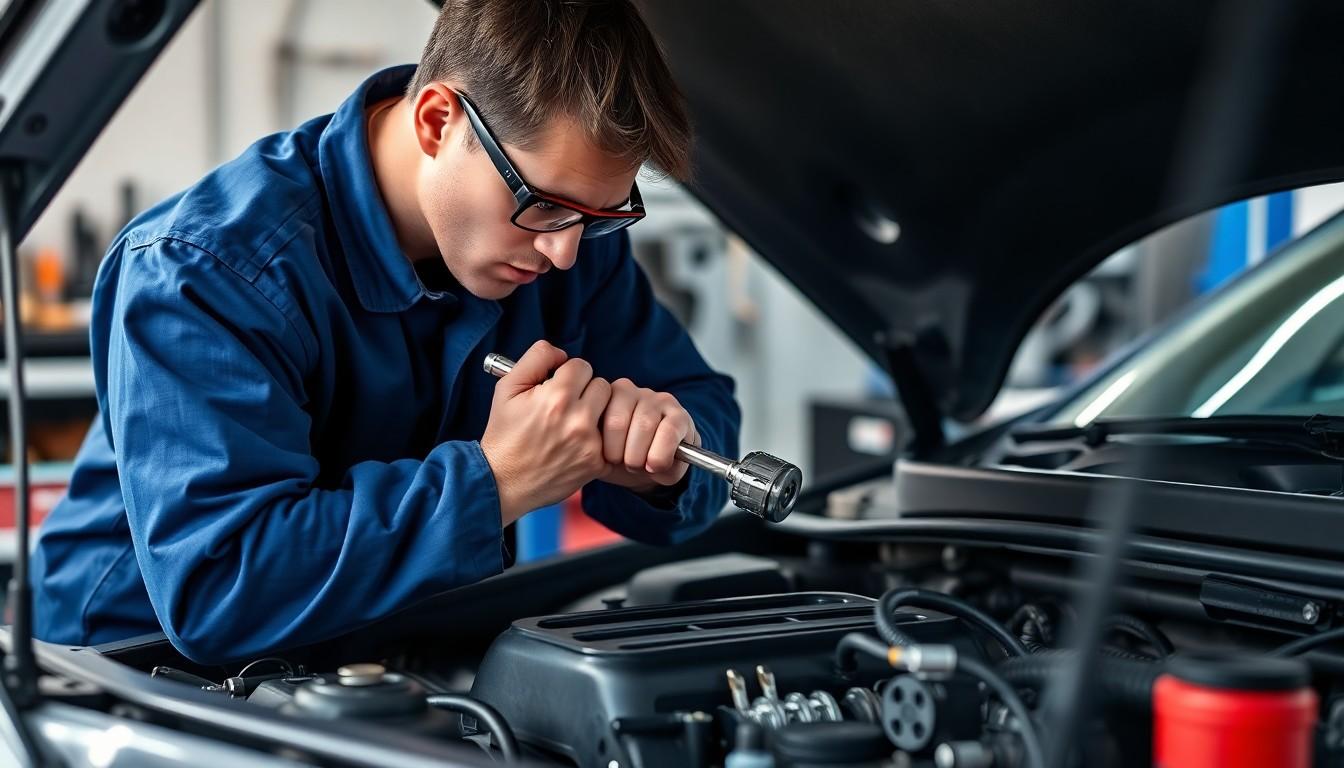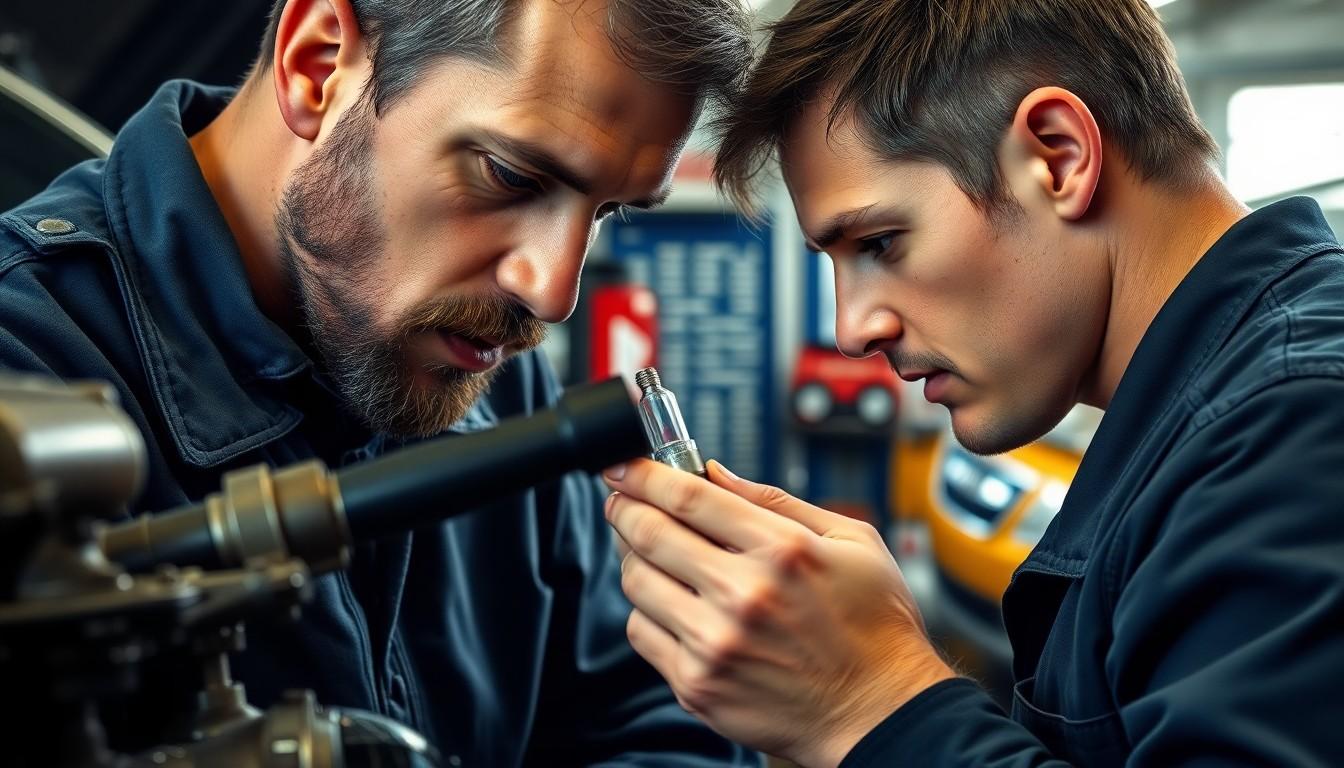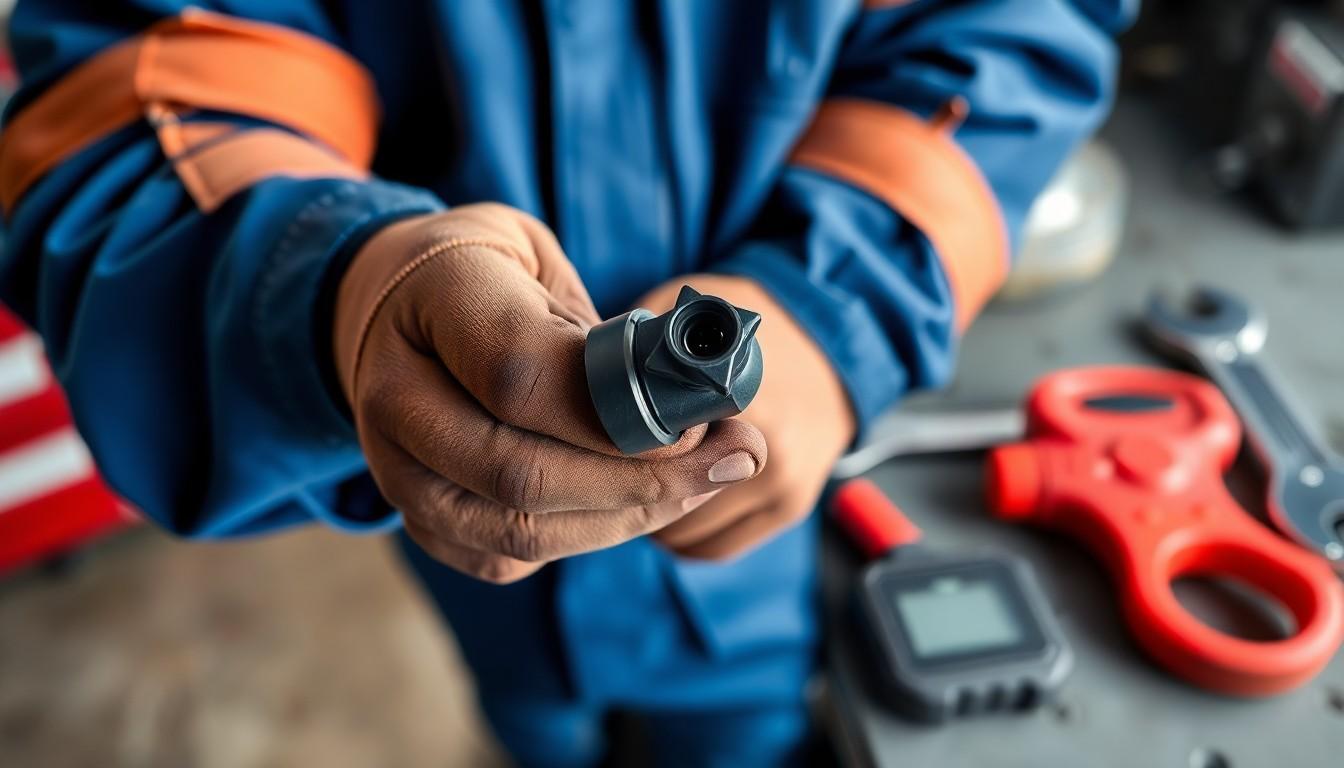Is your check engine light on? It might be due to a faulty camshaft position sensor. This critical component helps your engine’s computer determine the position of the camshaft, which is essential for proper ignition timing and fuel delivery. When it fails, you’ll notice poor engine performance, reduced fuel economy, and potential stalling.
We’ve helped thousands of drivers tackle this common issue without an expensive trip to the mechanic. Resetting your camshaft position sensor isn’t as complicated as it sounds, and with our step-by-step guide, you’ll have your vehicle running smoothly again in no time. You’ll save hundreds of dollars and gain valuable knowledge about your car’s systems that could help you troubleshoot future problems.
Understanding the Camshaft Position Sensor
The camshaft position sensor serves as a critical component in modern vehicle engines, constantly monitoring and reporting the exact position of the camshaft to the engine control module (ECM). This sensor plays an integral role in maintaining optimal engine performance through precise timing control.
What It Does and Why It Matters
Camshaft position sensors detect the rotational position and speed of the camshaft, sending this data directly to the ECM. The ECM uses this information to determine the position of the engine’s valves and pistons, allowing it to optimize ignition timing and fuel injection sequences. Without accurate camshaft position data, the ECM can’t properly synchronize these critical functions, leading to performance issues or complete engine failure. The sensor’s feedback ensures the spark plugs fire at exactly the right moment in the combustion cycle, maximizing power output and fuel efficiency while minimizing harmful emissions.
Common Signs of a Faulty Sensor
Engine misfires often indicate a failing camshaft position sensor, causing noticeable jerking or hesitation during acceleration. Difficulty starting the vehicle represents another telltale sign, as the ECM struggles to establish proper timing without accurate camshaft position data. Drivers might experience unexpected stalling at idle or low speeds when the sensor intermittently fails. Poor acceleration performance occurs when the sensor delivers incorrect timing information, causing the engine to lose power even when pressing the gas pedal. Check engine lights typically illuminate on the dashboard when the ECM detects inconsistent signals from the sensor. Reduced fuel economy results from improper combustion timing, causing the engine to use more fuel than necessary. Rough idling manifests as unusual vibrations or irregular RPM fluctuations when the vehicle is stationary with the engine running.
Tools Needed for Resetting a Camshaft Position Sensor

Resetting a camshaft position sensor requires exact tools to complete the job correctly. Having the right equipment on hand ensures you can efficiently diagnose, remove, and reset the sensor without causing damage to your vehicle’s engine components.
Basic Tools Required
A wrench or socket set is essential for loosening and removing the bolts that secure the camshaft position sensor to the engine. Your vehicle’s owner’s manual provides valuable information about the exact location of the sensor exact to your make and model. If your inspection reveals that the current sensor is damaged or malfunctioning, you’ll need a new camshaft position sensor compatible with your vehicle’s engine specifications. A wire connector tool helps safely disconnect and reconnect the electrical connections without damaging the delicate pins and sockets. Before starting any work, gather all these tools to avoid interruptions during the reset process.
Optional Diagnostic Equipment
An OBD-II scanner represents the most reliable method for resetting a camshaft position sensor. This diagnostic tool connects directly to your vehicle’s OBD port, typically located under the dashboard near the steering column. Modern scanners feature user-friendly interfaces that guide you through the “Camshaft Position Sensor Relearn” or “Crank Angle Sensor Error Relearn” function with step-by-step instructions. Safety considerations include disconnecting the battery in some vehicle models before beginning the reset procedure. For drivers without access to an OBD-II scanner, an alternative reset method involves following a exact driving procedure, though this approach takes considerably longer (30-60 minutes) and offers less consistent results than using dedicated diagnostic equipment.
Step-by-Step Process to Reset a Camshaft Position Sensor

Resetting a camshaft position sensor involves several precise steps that vary slightly depending on your vehicle make and model. Following these steps carefully ensures proper reset and functioning of this critical engine component.
Locating the Sensor in Different Vehicle Makes
The camshaft position sensor typically resides near the camshaft or timing belt cover in most vehicles. Finding this component requires checking exact locations based on your car’s manufacturer and model. Most sensors attach directly to the engine block or cylinder head, with placement varying across different automotive brands. Toyota vehicles often have the sensor mounted on the side of the cylinder head, while Ford models frequently position it near the front of the engine. Consulting your owner’s manual provides exact location details for your exact vehicle, saving time during the reset process.
Disconnecting the Battery
Disconnecting the negative terminal of your car’s battery serves as a safety precaution before working on the camshaft position sensor. This step helps prevent electrical shocks and unintended system resets during the procedure. Locate the negative terminal (marked with a minus sign) and use a wrench to loosen the connecting bolt. Carefully remove the cable from the terminal and secure it away from metal surfaces to avoid accidental reconnection. While this step isn’t always mandatory for simple sensor resets, it’s particularly important if you’re replacing the entire sensor unit.
Removing and Resetting the Sensor
Resetting the camshaft position sensor can be accomplished through two primary methods. The first approach involves using an OBD-II scanner, which offers the most reliable results. Connect the scanner to your vehicle’s diagnostic port, typically located under the dashboard on the driver’s side. Turn on the ignition without starting the engine, then navigate to the “Camshaft Position Sensor Relearn” or “Crank Angle Sensor Error Relearn” function in the scanner menu. Follow the displayed instructions, which usually require starting the engine and letting it idle for a exact period until the scanner indicates successful completion.
For sensor replacement, start by disconnecting the electrical connector from the sensor by pressing the release tab and gently pulling it away. Loosen the mounting bolts using an appropriately sized wrench or socket, then remove the old sensor carefully from its housing. Install the new sensor by reversing this process, ensuring proper alignment before tightening the mounting bolts to manufacturer specifications.
Proper Reinstallation Techniques
Proper reinstallation ensures optimal sensor function and prevents future issues. When reconnecting the sensor, verify the electrical connector clicks firmly into place, confirming a secure connection. Inspect all wiring for signs of wear, damage, or corrosion that might interfere with signal transmission. Mounting bolts require tightening to the manufacturer’s torque specifications—neither too loose nor overtightened, as improper torque can damage the sensor or create false readings. After installation, reconnect the battery’s negative terminal if previously disconnected.
Taking the vehicle for a test drive helps confirm successful reset. Monitor for smooth idling, proper acceleration, and absence of engine warning lights. Using an OBD-II scanner after the test drive checks for any remaining fault codes, confirming the reset process worked correctly. Any persistent issues indicate potential problems with the new sensor or other related components that require further attention.
When to Replace Instead of Reset

While resetting the camshaft position sensor often resolves temporary issues, there are situations where replacement is the only effective solution. A faulty sensor can cause ongoing engine performance problems that no amount of resetting will fix.
Signs That Indicate Replacement Is Necessary
Engine misfires serve as a primary indicator that your camshaft position sensor needs replacement rather than just a reset. Your vehicle might experience rough idling or shake noticeably when stopped at traffic lights. Poor acceleration, where your car struggles to gain speed even though pressing the gas pedal, suggests a failing sensor that’s disrupting proper fuel delivery timing. Starting difficulties, particularly in cold weather, often point to a camshaft sensor that’s completely malfunctioning. Persistent check engine lights that return immediately after clearing the codes indicate the sensor itself is damaged or worn out. Unusual engine noises, including ticking or knocking sounds, emerge when the timing is off due to incorrect camshaft position data. Physical inspection revealing cracked housing, corroded connections, or oil contamination confirms the sensor has deteriorated beyond the point of reset.
Cost Comparison: Reset vs. Replace
Resetting a camshaft position sensor typically costs between $0-$100 depending on whether you already own an OBD-II scanner. These diagnostic tools range from $20 for basic models to $100+ for advanced features, making them a worthwhile investment for DIY car maintenance. The reset process takes approximately 10-30 minutes depending on your familiarity with the procedure and scanner functionality.
Replacing the sensor involves both parts and potential labor costs. The sensor itself generally costs $50-$200 depending on your vehicle make and model, with luxury and European vehicles typically at the higher end of this range. Professional installation adds $50-$200 in labor charges, bringing the total replacement cost to $100-$400. DIY replacement takes about 30-60 minutes for someone with basic mechanical knowledge, saving considerable labor costs. Aftermarket sensors cost less than OEM (Original Equipment Manufacturer) parts but may vary in quality and longevity. Given that a faulty sensor can lead to decreased fuel efficiency, engine damage, and failed emissions tests, the replacement cost often proves more economical than continuing to reset a deteriorating sensor.
After the Reset: What to Expect

Once you’ve completed the camshaft position sensor reset process, your vehicle’s engine control module (ECM) needs time to adjust to the new settings. Understanding what happens during this period helps ensure the reset was successful and your engine performs optimally.
Normal Adaptation Period
The ECM requires a calibration period to properly read and integrate data from the reset camshaft position sensor. This adaptation typically takes between a few minutes to an hour of normal driving conditions. During this time, your vehicle’s computer is learning and adjusting to the sensor’s readings to optimize engine performance. Your driving experience might feel slightly different as the system recalibrates, but these subtle changes should stabilize quickly as the ECM completes its adaptation process.
Verifying Successful Reset
Confirming your camshaft position sensor reset worked properly involves several checks to ensure optimal engine performance:
- Check for fault codes – Use an OBD-II scanner to verify no error codes related to the camshaft position sensor remain in the system. A clean scan indicates a successful reset.
- Evaluate engine performance – Take your vehicle for a test drive, paying attention to how it runs. A properly reset sensor results in smooth operation without misfires, harsh idling, or sluggish acceleration.
- Listen for unusual sounds – A successful reset eliminates engine knocking, ticking, or hesitation during acceleration that previously occurred due to sensor issues.
- Monitor fuel efficiency – Track your gas mileage over the next few tanks. Improved fuel economy often indicates the camshaft position sensor is functioning correctly.
- Observe long-term stability – Continue monitoring your engine’s performance for several days after the reset to ensure problems don’t return, confirming the fix was successful rather than temporary.
Conclusion
Resetting your camshaft position sensor can be a straightforward DIY task with the right tools and knowledge. Whether you choose to use an OBD-II scanner or opt for a complete replacement we’ve shown that this maintenance doesn’t always require professional help.
Remember that proper diagnosis is essential before attempting any reset. Sometimes a reset will solve your issues while other scenarios may demand a full replacement to restore optimal engine performance.
By addressing camshaft position sensor problems promptly you’re not just fixing an immediate issue but potentially preventing more serious engine damage down the road. With these techniques in your automotive toolkit you’ll save money and gain confidence in handling future car troubles.
Frequently Asked Questions
What is a camshaft position sensor and why is it important?
A camshaft position sensor monitors the camshaft’s position and relays this data to the engine control module (ECM). It’s critical for optimizing ignition timing and fuel injection, ensuring efficient engine performance. Without accurate information from this sensor, your engine can’t properly synchronize these functions, leading to performance issues and increased emissions.
What are common signs of a faulty camshaft position sensor?
Common symptoms include engine misfires, difficulty starting your vehicle, unexpected stalling, poor acceleration, and reduced fuel economy. You might also notice rough idling or the check engine light illuminating on your dashboard. These issues occur because the engine control module isn’t receiving accurate data about camshaft positioning.
What tools do I need to reset a camshaft position sensor?
You’ll need a wrench or socket set, possibly a new camshaft position sensor if the current one is faulty, and a wire connector tool for safely handling electrical connections. An OBD-II scanner is the most reliable tool for resetting the sensor. For some vehicle models, you may also need to disconnect the battery as a safety precaution.
How do I locate the camshaft position sensor in my vehicle?
The camshaft position sensor is typically located near the camshaft or timing belt cover. The exact location varies by vehicle make and model, so consult your owner’s manual for specific guidance. In many vehicles, it’s found on the side of the engine block or cylinder head, connected with an electrical connector.
What are the methods for resetting a camshaft position sensor?
There are two primary methods: using an OBD-II scanner to clear fault codes (the most reliable approach) or replacing the sensor entirely. Some vehicles may reset after disconnecting the battery for 10-15 minutes, though this is less reliable. After any reset method, the vehicle’s computer needs time to recalibrate during normal driving.
When should I replace the sensor instead of just resetting it?
Replace the sensor if you experience persistent engine performance issues like ongoing misfires, rough idling, poor acceleration, starting difficulties, or unusual engine noises. Physical inspection showing damage (cracked housing or corroded connections) also indicates replacement is necessary. Continuing to drive with a faulty sensor can lead to further engine damage.
How much does it cost to reset versus replace a camshaft position sensor?
Resetting the sensor typically costs between $0 (DIY with battery disconnection) to $100 (professional diagnostic service). Replacement costs range from $100 to $400, including parts and labor, depending on your vehicle make and model. While reset is cheaper initially, replacement may be more economical long-term if the sensor is truly failing.
How do I verify that the camshaft position sensor reset was successful?
After resetting, check for fault codes with an OBD-II scanner, evaluate engine performance during a test drive, listen for unusual sounds, and monitor fuel efficiency. It’s normal for the ECM to require a calibration period (a few minutes to an hour of driving) to integrate data from the reset sensor. Long-term stability of engine performance confirms success.

